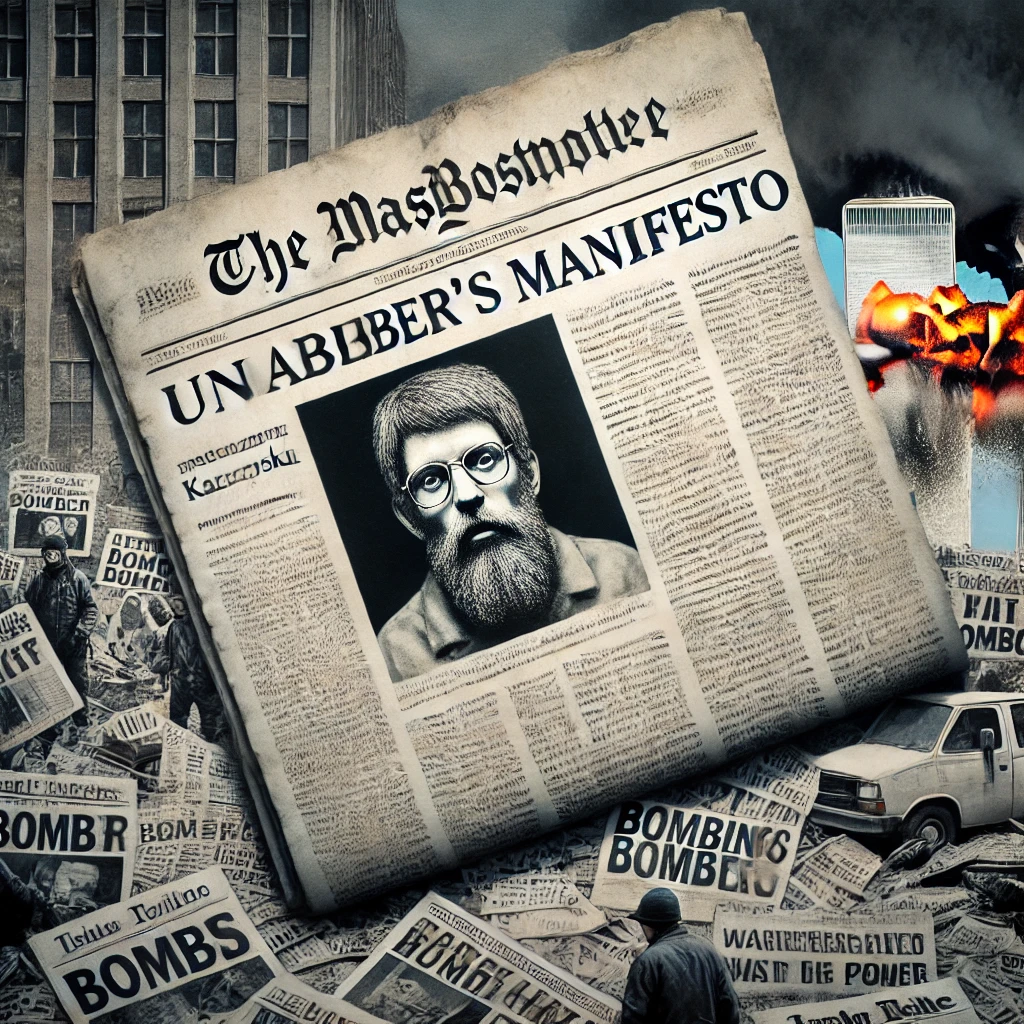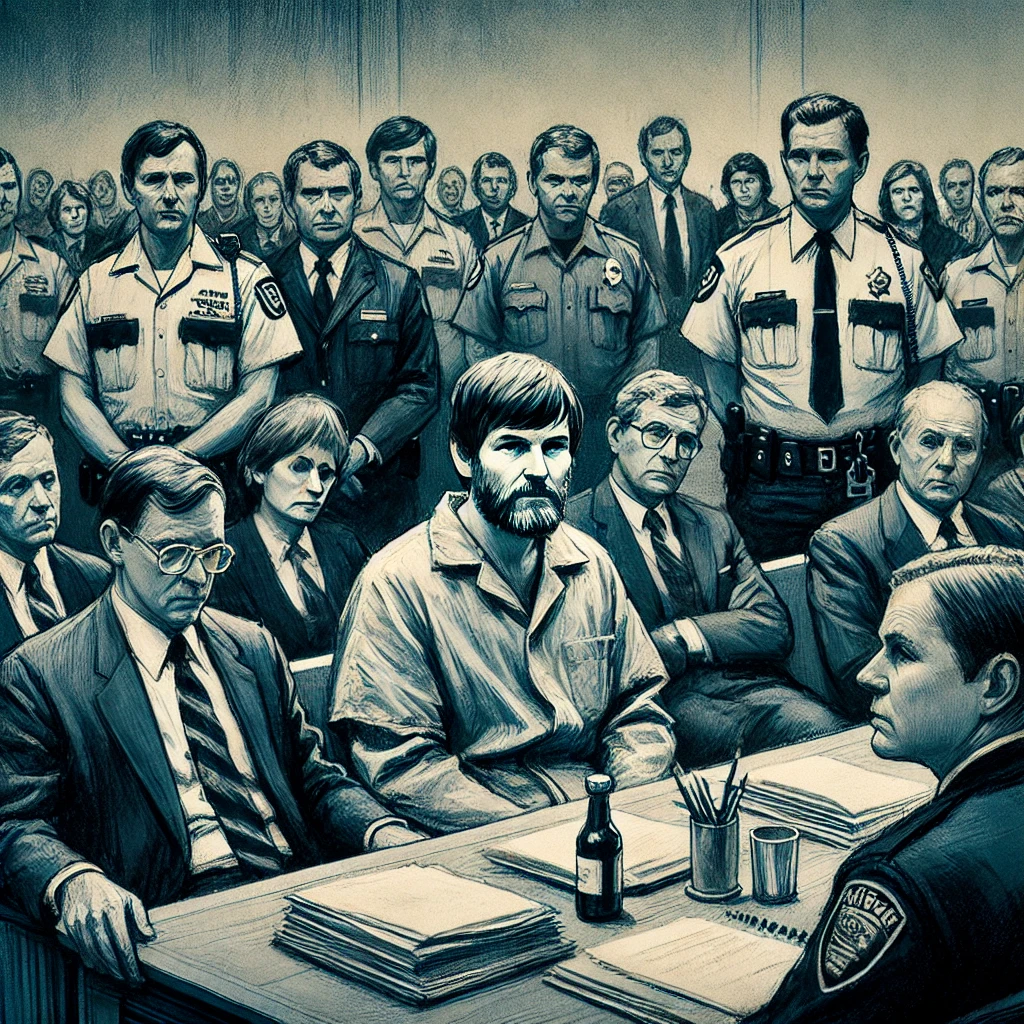On September 19, 1995, the Unabomber’s manifesto, a 35,000-word document written by Theodore John Kaczynski, was published in The New York Times and The Washington Post. This manifesto was the culmination of a violent campaign by Kaczynski, who had orchestrated a series of bombings that resulted in three deaths and 23 injuries over nearly two decades. The manifesto played a crucial role in Kaczynski’s capture and has since had a profound impact on societal discussions about technology, terrorism, and criminal justice.
Early Life and Education
Ted Kaczynski was born on May 22, 1942, in Chicago, Illinois. Raised in a working-class family, he exhibited exceptional intellectual abilities from a young age. His academic prowess earned him a scholarship to Harvard University, where he began studying mathematics. Kaczynski’s early life appeared promising; he was a promising student and showed considerable potential in his academic pursuits. However, beneath the surface, Kaczynski was grappling with profound psychological issues and growing disillusionment with society.

Transition to Isolation and Radical Beliefs
After earning his Ph.D. in mathematics from the University of Michigan, Kaczynski chose to leave academia and retreated to a remote cabin in Montana. This period marked a significant shift in his life. Isolated from mainstream society, Kaczynski became increasingly radicalized. He began to develop a deep-seated hatred for technological progress, which he believed was eroding human freedom and leading to societal decay. His manifesto, later published in 1995, articulated these beliefs in detail, presenting a critique of modern technology and advocating for a return to a simpler, pre-industrial society.
The Unabomber’s Campaign
Between 1978 and 1995, Kaczynski’s anti-technology ideology manifested in a series of bombings targeting individuals he deemed responsible for advancing technological progress. The attacks, which became known as the Unabomber’s campaign, were meticulously planned and executed. Kaczynski’s bombs were designed to cause maximum harm and instill fear. The campaign was characterized by its randomness and the difficulty law enforcement faced in identifying the perpetrator.
Publication of the Manifesto
In 1995, Kaczynski issued an ultimatum: he would cease his bombing campaign if a major newspaper published his manifesto. The manifesto, titled “Industrial Society and Its Future,” outlined Kaczynski’s anti-technology views and his critique of modern society. The publication of the manifesto in The New York Times and The Washington Post was a pivotal moment in the case. The document, with its detailed exposition of Kaczynski’s beliefs, provided crucial insights into his motivations and methods.

Capture and Trial
The publication of the manifesto led to a breakthrough in the investigation. Kaczynski’s brother, David, recognized the writing style and ideological content of the manifesto and alerted authorities. This tip led to Kaczynski’s arrest on April 3, 1996, at his cabin in Montana. The arrest was the result of years of investigation and collaboration between federal law enforcement agencies. Kaczynski was charged with multiple counts of murder and other crimes related to his bombing campaign.
The subsequent trial of Ted Kaczynski was highly publicized. In 1998, Kaczynski pleaded guilty to all charges, avoiding the death penalty in exchange for life imprisonment without parole. The trial and his plea deal garnered widespread media attention and sparked discussions about the nature of his crimes and his motivations.
Impact on Society and Technology
Kaczynski’s manifesto and his campaign of terror had a lasting impact on society. The manifesto’s publication ignited debates about the role of technology in modern life and the potential consequences of technological advancement. While Kaczynski’s methods were widely condemned, his critique of technology resonated with some individuals and sparked discussions about the ethical implications of technological progress.
The case also had a profound effect on law enforcement and investigative practices. The challenge of tracking and apprehending Kaczynski highlighted the need for improved forensic techniques and the importance of collaboration between agencies. The investigation set a precedent for future cases involving complex and high-profile criminal activities.
Cultural and Psychological Impact
The Unabomber case also left a mark on popular culture and psychological studies. The portrayal of Kaczynski in the media and literature often focused on his radical beliefs and the nature of his crimes. Psychologists and criminologists examined Kaczynski’s background and motivations to better understand the psychology of individuals who commit such acts of violence.

Ongoing Discussions and Legacy
Ted Kaczynski’s case continues to be a subject of interest and analysis. His manifesto remains a focal point for discussions about the impact of technology on society and the ethical considerations surrounding technological advancement. The Unabomber’s legacy serves as a cautionary tale about the potential consequences of radical ideologies and the importance of addressing underlying grievances through non-violent means.
Lasting Impact
The Unabomber’s manifesto and his campaign of terror have had a profound and lasting impact on society. The case raised important questions about the intersection of technology, ideology, and violence, and it continues to influence discussions about technological progress and its implications. The capture and trial of Ted Kaczynski marked a significant moment in criminal justice history and highlighted the complexities of addressing radical beliefs and violent actions.
In summary, the publication of Ted Kaczynski’s manifesto on September 19, 1995, was a pivotal moment in the Unabomber case. The manifesto provided critical insights into Kaczynski’s motivations and played a key role in his capture. The case has had a lasting impact on society, influencing discussions about technology, criminal justice, and the nature of radical ideologies.
